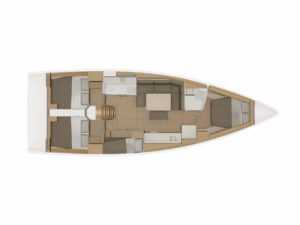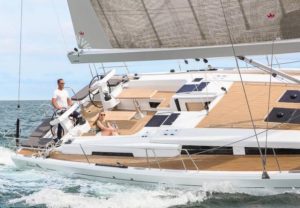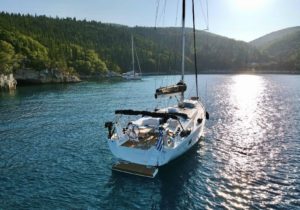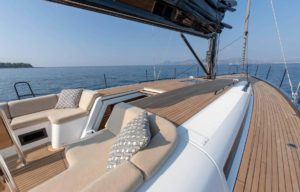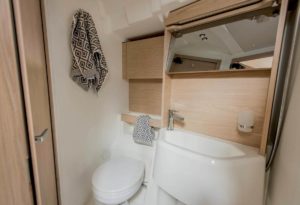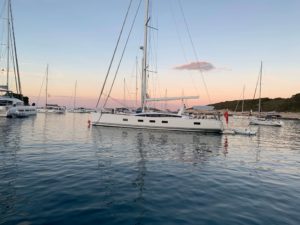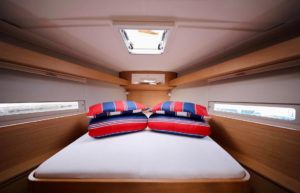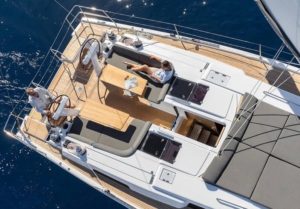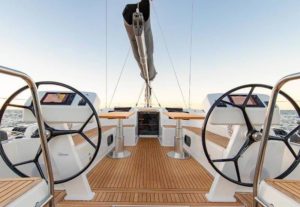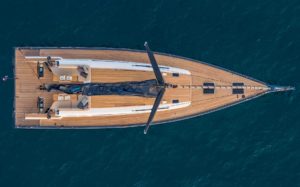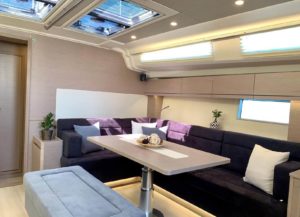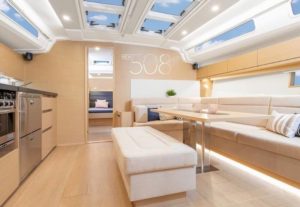Every little kid knows what a sailboat is, but do you really know all the ins and outs of this wonderful object that floats silently across the seas? If not, you can learn more about it here:
The history of sailing
The first traces of sailing ships go back to the year 5000 BC. It was the Egyptians who at that time were already sailing around on the Nile with boats supported by a large sail attached to a mast. After the Egyptians, there were still quite a few peoples who became known for their affinity for sailing. As examples, one can mention the Phoenicians or the Vikings. When it became clear to more and more people that the earth was indeed a sphere and not a disc, some brave sailors dared to search for the shortest way to India. One of them was Christopher Columbus, known to all as the “discoverer of America”. With the trade across the oceans, piracy also got more and more. Did you know that the pirates in the Bahamas had their own republic in Nassau at the beginning of the 18th century? As a result of increasing industrialization, larger barges were gradually needed and sailing ships gave way to large cargo ships. For several years now, however, more and more adventurers have dared to set sail again. Are you one of them?
How is an ordinary sailboat constructed?
While mainsail and foresail (also called jib or genoa) are probably familiar to everyone, the first ones will probably already be wondering what the spinnaker is all about. The spinnaker is a bellied foresail that is used instead of a jib or genoa when sailing downwind. This saves you some jibes and tacks (these are the maneuvers you need to stay on course).
In the hull of the ship is the living space of your sea hotel. Depending on the chosen boat type, this is smaller or larger. Read more about this below!
The centerboard or keel is used to balance the boat when it is leaning and is mainly used to prevent the boat from straying from its course. With the rudder, which is steered by the steering wheel or a tiller, the ship is maneuvered through the waves. If there is absolute calm (no wind), the engine must be started and the ship is driven through the waves by the propeller, which is either driven by the built-in engine or the outboard motor.
The vang ensures that the main boom stays down so that you can get the maximum yield of wind out of the sail. For this, you need the mainsheet. The foresail (jib/genoa) is brought into position with the jib sheets.
The forestay and backstay provide stability to the mast from the front and back. Furthermore, they serve to fix the sails. The shrouds do the same across the ship. They are sometimes spread by means of spreader rings to optimize the tractive force. At the top of the mast is the telltale, which helps the skipper to indicate the wind direction.
What it looks like below deck?
Below the deck of one of our many dream yachts, we have the cabins in which the beds are located. Most sailing yachts have two separate double beds in the bow and two in the stern. Furthermore, the modern sailing yacht usually has several wet rooms (shower/WC), so that there is no congestion in the bathroom in the morning before hoisting the sails. In the middle of the hull, you will find the lounge area as well as the kitchen of the yacht. Usually, the table can be lowered to create two more berths. So, you would have room for up to 10 people on this yacht. Whether and how you occupy the cabins is up to you. From our own experience, we can recommend eight persons, but we are happy to leave you the agony of choice.
Figure 3 – Interior of an Aloha | Oceanis 51.1; BOATICO
Depending on your budget, you can choose between somewhat older, simpler, or new ultra-modern yachts. The basic equipment of every yacht includes a small but fine kitchen, where you will probably be amazed many times during the trip, how well thought out a kitchen can be planned. Here, every centimeter is used sensibly. The oven and hob are mainly gas-powered and often gimballed, which means that you do not necessarily have to do without a hot meal even when there are waves. Furthermore, each boat has a refrigerator and a sink. As you can see, the hull of a boat also offers enough space for bad weather days, which unfortunately can also occur at BOATICO. But do not worry, we have a solution for you! Read more in the blog post about the bad weather program below deck!
Extras
Of course, BOATICO also has a few extras on board that you should know about! To make it easier to get ashore, most sailing yachts have a dinghy (inflatable rubber dinghy with a small motor), which makes it easier to get from the “parking place” to the beach or ashore in general. Many of our yachts are already equipped with autopilot and electric winches, which is a great help, especially for the skipper.
Have we awakened your desire for a dream sailing trip along lonely coasts or beaches or a dinner in a charming harbor town? Then click through our wonderful collection of sailing yachts and find your dream yacht.
Contact Boatico:
+44 20 4577 0741
+1 786 567 61 13
- Layout
- Sailing yacht
- Sailing with Boatico
- Deck
- Bathroom
- Sunset
- Front cabin
- Hanse 508
- Sailing yacht
- Interior
- Hanse 508
